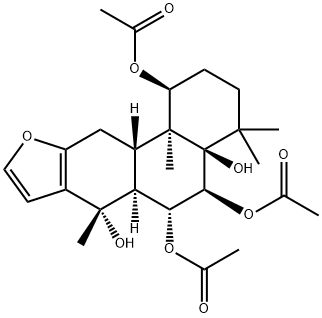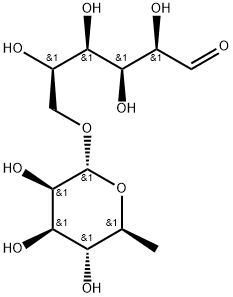STYRAX ESSENCE OLIFFAC
- CAS NO.:8046-19-3
- Molecular Weight: 0
- MDL number: MFCD00217872
- EINECS: 232-458-4
- Update Date: 2024-12-18 14:08:52
What is STYRAX ESSENCE OLIFFAC?
Description
Balsam obtained from the trunk of trees. Contains cinnamates, styrene, ete. It may contain resin acids and their esters, terpenes, and oxidation or polymerization products of these terpenes.
Chemical properties
Storax is an exudate produced in the sapwood (balsam) and bark tissue of the trees L. orientalis and L. styraciflua. The pathological condition is caused intentionally in L. orientalis by removing sections of the bark and injuring the inner sapwood. The crude storax is collected in cans and occasionally pieces of peeled bark are boiled in water to recover additional material. In L. styraciflua (American storax), the exudate accumulates in pockets of older trees; thus, it is not necessary to injure the sapwood to stimulate the pathological condition. Both types are tall trees (ca. 15 m or 49 ft), growing wild in Asia Minor and in the forests of Central and South America. The trees have leaves similar to maple, with flowers growing in clusters like those of plantain. The part used is the exudate (balsam). Storax has a pleasant, sweet, balsamic, slightly spicy odor.
The Uses of STYRAX ESSENCE OLIFFAC
Styrax is an ointment in the treatment of scabies and other parasitic skin diseases; used in inhalations for catarrh of the upper respiratory tract; in fumigating pastilIes and powders; in perfumes; imbedding material in microscopy; topical protectant; expectorant; some perfumery uses (aerosol fragrances; apple blossom; fixer the best for soap; Stock) in veterinary medicine, it is used as a parasiticide.
What are the applications of Application
Gum storax is Decreases the viability of human lymphocytes in vitro
Definition
Extractives and their physically modified derivatives. It consists primarily of resins, essential oils, and usually cinnamic and benzoic acids. (Liquidambar styraciflua, Hamamelidaceae).
Composition
The leaves of L. styraciflua contain tannin and small quantities of a volatile oil. The main constituents of storax include styracin, cinnamic acid and its esters, vanillin, styrene and probably styrocamphene. In styrax gummi, the contents of free and hydrolytic cinnamic acid were 7.03 and 25.26%, respectively; and in its original plant L. orientalis, they were 0.3% evenly
General Description
Very viscous, dark amber to brown liquid with an agreeable balsamic odor and taste.
Air & Water Reactions
Insoluble in water.
Reactivity Profile
STYRAX ESSENCE OLIFFAC may react vigorously with strong oxidizing agents. May react exothermically with reducing agents to release hydrogen gas. In the presence of various catalysts (such as acids) or initiators, can undergo exothermic addition polymerization.
Health Hazard
SYMPTOMS: STYRAX ESSENCE OLIFFAC may cause skin sensitization.
Fire Hazard
Literature sources indicate that STYRAX ESSENCE OLIFFAC is combustible.
Properties of STYRAX ESSENCE OLIFFAC
| Density | 1.192 g/mL at 25 °C(lit.) |
| vapor pressure | 3.13Pa at 25℃ |
| refractive index | n |
| FEMA | 3036 | STORAX (LIQUIDAMBAR SPP.) |
| Flash point: | >230 °F |
| form | Liquid:viscous |
| Odor | at 100.00 %. storax |
| EPA Substance Registry System | Storax (balsam) (8046-19-3) |
Safety information for STYRAX ESSENCE OLIFFAC
| Signal word | Warning |
| Pictogram(s) |
 Exclamation Mark Irritant GHS07 |
| GHS Hazard Statements |
H317:Sensitisation, Skin |
| Precautionary Statement Codes |
P280:Wear protective gloves/protective clothing/eye protection/face protection. |
Computed Descriptors for STYRAX ESSENCE OLIFFAC
STYRAX ESSENCE OLIFFAC manufacturer
Gem Aromatics Pvt Ltd
New Products
(S)-3-Aminobutanenitrile hydrochloride 4-Methylphenylacetic acid N-Boc-D-alaninol N-BOC-D/L-ALANINOL Tert-butyl bis(2-chloroethyl)carbamate 3-Morpholino-1-(4-nitrophenyl)-5,6-dihydropyridin- 2(1H)-one Furan-2,5-Dicarboxylic Acid Tropic acid 1-Bromo-3,5-Di-Tert-Butylbenzene S-2-CHLORO PROPIONIC ACID ETHYL ISOCYANOACETATE 2-Bromo-1,3-Bis(Dimethylamino)Trimethinium Hexafluorophosphate 4-IODO BENZOIC ACID 3-NITRO-2-METHYL ANILINE 1-(2,4-DICHLOROPHENYL) ETHANAMINE (2-Hydroxyphenyl)acetonitrile 4-Bromopyrazole 2-(Cyanocyclohexyl)acetic acid 4-methoxy-3,5-dinitropyridine 1-(4-(aminomethyl)benzyl)urea hydrochloride 2-aminopropyl benzoate hydrochloride diethyl 2-(2-((tertbutoxycarbonyl)amino) ethyl)malonate tert-butyl 4- (ureidomethyl)benzylcarbamate Ethyl-2-chloro((4-methoxyphenyl)hydrazono)acetateRelated products of tetrahydrofuran
![1-[2-(4-CHLOROPHENYL)-1-(1-HYDROXY-1-PHENYLETHYL)ETHYL]-1,2,4-TRIAZOLE](https://img.chemicalbook.in/CAS/GIF/224047-41-0.gif)







You may like
-
 8046-19-3 Storax 98%View Details
8046-19-3 Storax 98%View Details
8046-19-3 -
 Styrax Resinoid CASView Details
Styrax Resinoid CASView Details -
 Styrax CAS 8046-19-3View Details
Styrax CAS 8046-19-3View Details
8046-19-3 -
 1975-50-4 98%View Details
1975-50-4 98%View Details
1975-50-4 -
 2-HYDROXY BENZYL ALCOHOL 98%View Details
2-HYDROXY BENZYL ALCOHOL 98%View Details
90-01-7 -
 2-Chloro-1,3-Bis(Dimethylamino)Trimethinium Hexafluorophosphate 221615-75-4 98%View Details
2-Chloro-1,3-Bis(Dimethylamino)Trimethinium Hexafluorophosphate 221615-75-4 98%View Details
221615-75-4 -
 14714-50-2 (2-Hydroxyphenyl)acetonitrile 98+View Details
14714-50-2 (2-Hydroxyphenyl)acetonitrile 98+View Details
14714-50-2 -
 118753-70-1 98+View Details
118753-70-1 98+View Details
118753-70-1